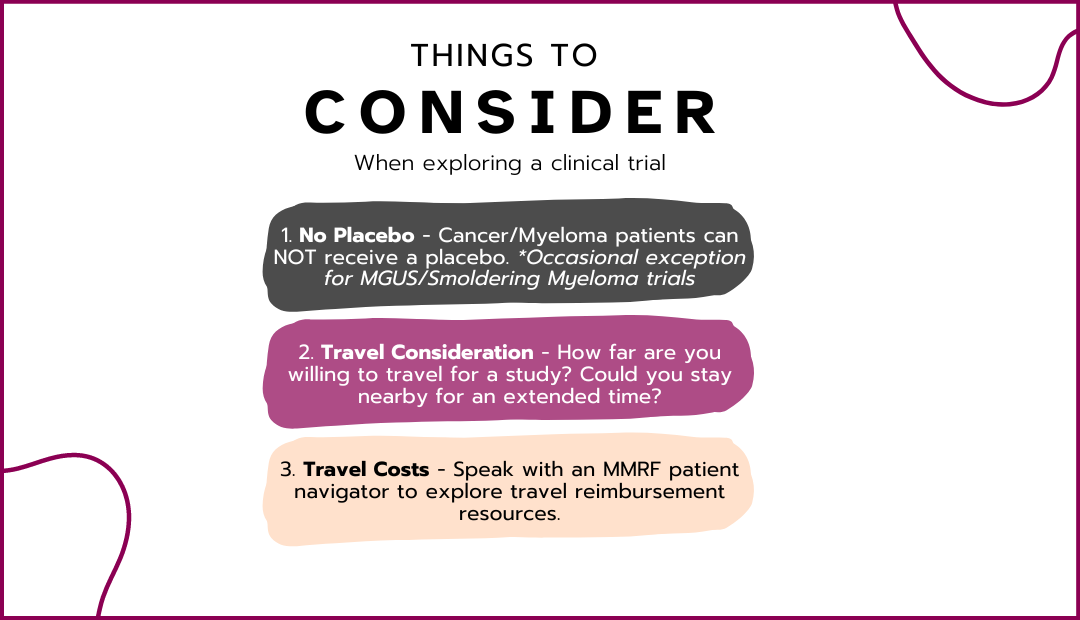A Trial Comparing Single Agent Melphalan to Carmustine, Etoposide, Cytarabine, and Melphalan (BEAM) as a Preparative Regimen for Patients With Multiple Myeloma Undergoing High Dose Therapy Followed by Autologous Stem Cell Reinfusion
NCT03570983
Age 18 - 70
Sex Both
Phase Phase 2
Third Opinion Trial Synopsis
This study is trying to find out which treatment is better for a cancer called Multiple Myeloma. The two treatments being compared are called Melphalan and BEAM. The study will be safe because other studies have shown BEAM to be safe and the doses used will not be too high. BEAM has been found to work well in other cancers, but we need to see if it works well for Multiple Myeloma too. Melphalan, the current treatment, doesn't work great and this study will see if BEAM is better.
This study is trying to find out which treatment is better for a cancer called Multiple Myeloma. The two treatments being compared are called Melphalan and BEAM. The study will be safe because other studies have shown BEAM to be safe and the doses used will not be too high. BEAM has been found to work well in other cancers, but we need to see if it works well for Multiple Myeloma too. Melphalan, the current treatment, doesn't work great and this study will see if BEAM is better.
Third Opinion AI Generated Synopsis
Trial Summary
The work proposed herein aims to provide the first prospective, randomized comparative efficacy data between Melphalan and BEAM treatment regimen in the Multiple Myeloma (MM) patient population. The risk of such a study is deemed reasonable and ethical since: a) previous works have closely examined the safety and toxicity of the BEAM regimen and the doses to be delivered in this protocol are well below the toxicity levels; b) phase III trials of BEAM have provided reasonable data regarding the efficacy in lymphomas c) Early, retrospective data suggests that BEAM may be efficacious in MM however due to the lack of prospective controlled randomized clinical trial, there is adequate equipoise regarding its efficacy and moreover its comparative efficacy in relation to Melphalan and; D) there are known limitations in the standard-of-care for MM, Melphalan, namely, relatively low rates of complete response at the time of Autologous stem-cell transplantation (ASCT) and poor progression free survival.
The work proposed herein aims to provide the first prospective, randomized comparative efficacy data between Melphalan and BEAM treatment regimen in the Multiple Myeloma (MM) patient population. The risk of such a study is deemed reasonable and ethical since: a) previous works have closely examined the safety and toxicity of the BEAM regimen and the doses to be delivered in this protocol are well below the toxicity levels; b) phase III trials of BEAM have provided reasonable data regarding the efficacy in lymphomas c) Early, retrospective data suggests that BEAM may be efficacious in MM however due to the lack of prospective controlled randomized clinical trial, there is adequate equipoise regarding its efficacy and moreover its comparative efficacy in relation to Melphalan and; D) there are known limitations in the standard-of-care for MM, Melphalan, namely, relatively low rates of complete response at the time of Autologous stem-cell transplantation (ASCT) and poor progression free survival.
from ClinicalTrials.gov
Locations & Contact
Fill out the form and to let the Multiple Myeloma Research Foundation know you are interested in this trial.
Contacts:

